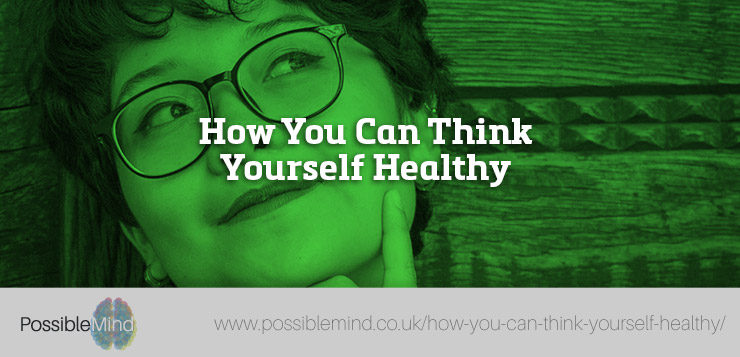Most doctors agree that the mind has a profound effect upon a person’s sense of wellbeing.
Research has shown that optimists have a powerful, positive effect upon their health, and everyone knows you can think yourself into being ill.
Children are great at it if they have an exam the next day at school. For some children, it’s an effective way of getting attention. But, unfortunately, some of these dysfunctional patterns can continue into adulthood.
Others get affected by what I call cultural hypnosis. They have only to hear a few people saying ‘there’s a cold going round’ – and they get one.
Obviously, I’m not saying that all ill health is in the mind. But in days you can become more healthy, simply by changing the way your mind works.
The immune system
We live in an age when amazing medical advancements are constantly taking place. Drugs and surgery have become commonplace.
Many people expect instant cures from the doctors for their ills, and hand over responsibility for their health to the medical profession, preferring a prescription to instigating a change in their lifestyle or diet.
But remember, we have our own protection against illness – our immune systems, which work to fight infection and diseases.
It’s easy to think of the immune system as a purely physical thing; but more and more research is showing this is not the case.
A few years ago, some interesting research was conducted in the U.S. to try to discover why some people survive cancer. The 100 people interviewed had all been diagnosed as terminally ill: 12 years later, however, they were still alive. The intention of the study was to discover what they had done in common.
They had all used different treatments – some conventional, such as surgery or chemotherapy, and some alternative, such as acupuncture and special diets. Some had used psychological techniques, or religious practices.
But what they had in common was an unfaltering belief that what they were doing would work for them. I began wading through more clinical research, and found similar experiments also seemed to suggest that it is possible to boost your immune system just by thinking about it.
A neuropsychologist called Nicholas Hall, at George Washington University Medical Centre, found that his subjects could use imagery to increase the number of circulating white blood cells, as well as levels of thymosinalpha-1, a hormone used to ward off illness.
So, too, Dr Frank Lawlis and his team at the University of Texas found imagery boosted the numbers of neutrofils (special disease-fighting cells) in the bloodstream.
Doctors Ikemi and Nakagawa at Yokohama City University in Japan showed that 84 per cent of subjects could eliminate the standard histamine response to poison ivy. The itching, swelling and blisters disappeared when the subjects under hypnosis simply imagined the poison ivy to be a harmless plant.
Even more interesting, a large number of subjects broke out in blisters when they reversed the experiment and imagined the harmless plant to be poison ivy.
Another amazing experiment by Dr David Spiegal at Stanford was conducted on a group of women with breast cancer.
Half the group received the latest medical help. The other group received the same medical treatment but also learned self-hypnosis and did very simple guided imagery. They imagined themselves relaxed and floating.
After a year, the second group reported much less pain and more optimism. That didn’t really surprise the researchers: but what did was that ten years later, the second group had lived an average of twice as long as the first.
Now, nobody is saying that hypnosis is a cure for cancer, but regular self-hypnosis or guided imagery will improve the quality of your life and the length of it.
How to boost your immunity
My inspiration for the following exercise came from an experiment carried out by Professor Karen Olness at The Rainbow Babies and Children’s Hospital of University Hospitals of
Cleveland. The experiment involved a group of children being shown a video featuring puppets.
The video was a simplified illustration of the internal workings of the body, and each puppet represented something different. One puppet was a virus; another that looked like a policeman represented the immune system.
When the video finished, the children were told to close their eyes, relax and imagine lots of policemen puppets looking after their blood.
Saliva samples were taken from each child, and the results showed that their immunoglobulin levels had substantially increased. Their immune systems had begun working as though they were fighting off real infections.
You can use a similar method to boost your own immunity. This technique is not a substitute for medical treatment, although it may be used in conjunction with treatments prescribed by your physician.
- Close your eyes and imagine your immune system in a way that appeals to you. I have found it best to think of it as lots of little pale-coloured jellyfish type creatures – which is similar to how the protective cells actually look. Make sure there are plenty of them, and see them as strong and purposeful.
- Next, imagine travelling inside your body to the area that needs healing, and notice how you imagine the problem manifesting. You might see the infection or diseased cells as lots of tiny black globules.
- Now, the jellyfish are going to destroy the black globules. It’s best not to imagine the immune system fighting; rather see the pale-coloured jellyfish surrounding and devouring the tiny black globules.
- When all the tiny globules are gone, it’s important to then imagine the jellyfish happily swimming off and patrolling your bloodstream. This ensures you do not over-stimulate your immune system.
- Imagine now a healthier you sitting in front of you. See how the person looks, smiles, and so on.
- Now step into the healthier you and feel how much better you feel.
This article was written by Paul McKenna on www.dailymail.co.uk in 2003.
If you like this post you will also enjoy:
- Imagery Can Help You Recover from Injuries and Illness – Learn Mind Power With John Kehoe.
- Mind Power and Belief for Recovery and Healing.
- How Athletes Recover Quicker Using Mind Power.
- The Healing Power of Illness Book Overview.
Further Reading:






